
-
 Winter 2025 Newsletter
Winter 2025 Newsletter -
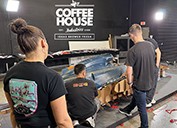 Coffee House Industries Builds the First McLaren x Allwyn "Scratch Car" in Collaboration with Designer Florian Weber
Coffee House Industries Builds the First McLaren x Allwyn "Scratch Car" in Collaboration with Designer Florian Weber -
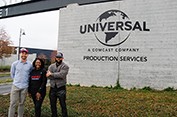 NEW ERA OF INDEPENDENT FILMMAKING IN ATLANTA
NEW ERA OF INDEPENDENT FILMMAKING IN ATLANTA -
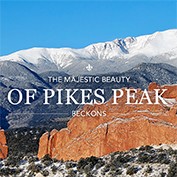 Retreat to the Mountain, Return to Yourself
Retreat to the Mountain, Return to Yourself -
 Five most common mistakes made by Producers......and how to avoid them!
Five most common mistakes made by Producers......and how to avoid them! -
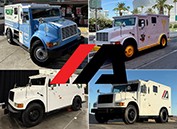 Malibu Autobahn Puts Its Armored Truck to the Test
Malibu Autobahn Puts Its Armored Truck to the Test -
 Announcing the BVA Final 2025 Auction!
Announcing the BVA Final 2025 Auction! -
 New Arrivals
New Arrivals -
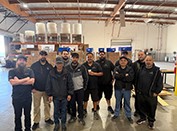 SmartSource Los Angeles Expands to New Facility
SmartSource Los Angeles Expands to New Facility -
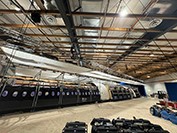 Shoot Aviation Widebody for Apple TV's PLURIBUS
Shoot Aviation Widebody for Apple TV's PLURIBUS -
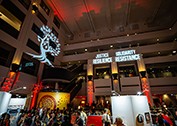 4Wall & Metro Media Productions Illuminate CNA's Global Nurses Solidarity Assembly
4Wall & Metro Media Productions Illuminate CNA's Global Nurses Solidarity Assembly -
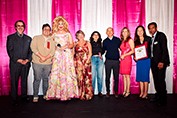 The Lot at Formosa Wins Corporate Innovation Award
The Lot at Formosa Wins Corporate Innovation Award -
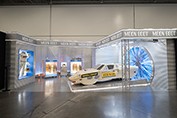 Coffee House Industries Brings MOONBOOT at ComplexCon Las Vegas
Coffee House Industries Brings MOONBOOT at ComplexCon Las Vegas -
 The Board Patrol now carries Sand & Grass Protectors
The Board Patrol now carries Sand & Grass Protectors -
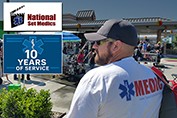 National Set Medics Celebrates 10 Years of Service!
National Set Medics Celebrates 10 Years of Service! -
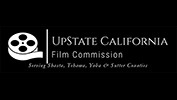 Fall Newsletter
Fall Newsletter
Production News & Events -
 In Memory of Otto Nemenz
In Memory of Otto Nemenz
(1941-2025)
A Legacy That Shaped Cinema -
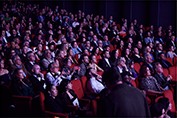 Submissions are Now Open for the Society of Camera Operators (SOC) Camera Operator of the Year Film and Television and will Open November 5th for Technical Achievement Awards
Submissions are Now Open for the Society of Camera Operators (SOC) Camera Operator of the Year Film and Television and will Open November 5th for Technical Achievement Awards -
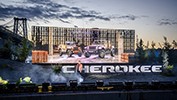 4Wall & GPJ Transform Domino Park for Historic Jeep Cherokee 2026 Reveal By 4Wall Entertainment
4Wall & GPJ Transform Domino Park for Historic Jeep Cherokee 2026 Reveal By 4Wall Entertainment -
 GALPIN IS PROUD TO INTRODUCE OUR
GALPIN IS PROUD TO INTRODUCE OUR
NEW Production Supply Manager
John Vargas -

-
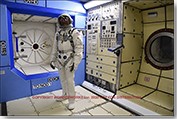 WonderWorks - Gateway To The Stars
WonderWorks - Gateway To The Stars -
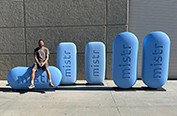 WLA3D Produces Large Scale Models for Company Launch
WLA3D Produces Large Scale Models for Company Launch -
 United Rentals Tool Solutions Powers Film & Production Communications
United Rentals Tool Solutions Powers Film & Production Communications -

-
 Coffee House Industries Helps Bring Six Flags Fright Fest to Life
Coffee House Industries Helps Bring Six Flags Fright Fest to Life -
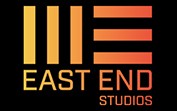
-
 Newel Props, Film and TV Set Rentals in New York
Newel Props, Film and TV Set Rentals in New York -
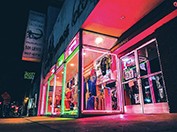 From store racks to your home screen...
From store racks to your home screen...
Iguana Vintage Clothing is LIVE on WhatNot! -
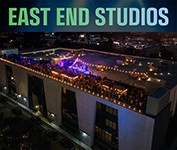
-
 Welcome to TCP Insurance: Trusted Coverage for the Creative Community
Welcome to TCP Insurance: Trusted Coverage for the Creative Community -
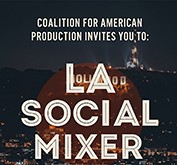
-
 From Sketch to Spotlight: Coffee House Industries Brings the Canelo vs. Crawford Belt Display to Life in Record Time
From Sketch to Spotlight: Coffee House Industries Brings the Canelo vs. Crawford Belt Display to Life in Record Time -
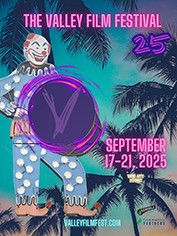 The 25th Annual Valley Festival is Here Again
The 25th Annual Valley Festival is Here Again -
 The Lot at Formosa: A Storied Studio's Next Chapter Unfolds
The Lot at Formosa: A Storied Studio's Next Chapter Unfolds -
 2025 EMERGING CINEMATOGRAPHER AWARDS - LOS ANGELES!
2025 EMERGING CINEMATOGRAPHER AWARDS - LOS ANGELES! -
 Producers are going BIG with Reel Monster Trucks
Producers are going BIG with Reel Monster Trucks -

-

-
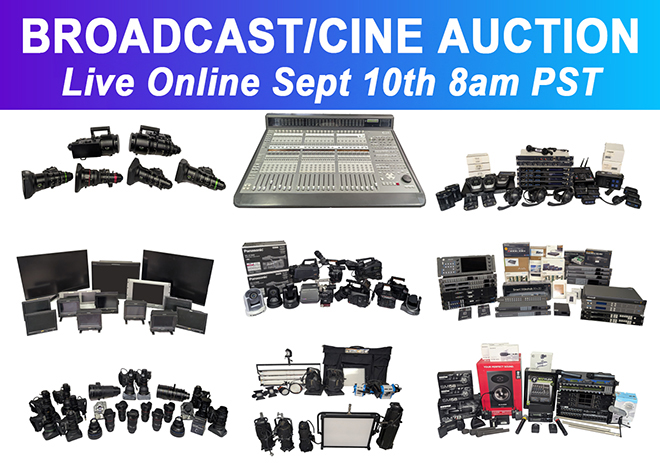
-
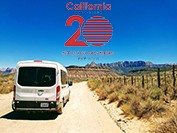 California Rent A Car's Studio Division celebrates its 20th anniversary!
California Rent A Car's Studio Division celebrates its 20th anniversary! -
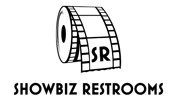 Showbiz Restrooms Brings Luxury to the Film Industry
Showbiz Restrooms Brings Luxury to the Film Industry -
 FILM READY AVIATION MOCKUPS
FILM READY AVIATION MOCKUPS -
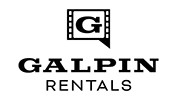 Here we Grow Again
Here we Grow Again -
 From Blueprint to Reality: Heck Yeah Productions Unveils 5,000 Sq. Ft. Event and Recording Space
From Blueprint to Reality: Heck Yeah Productions Unveils 5,000 Sq. Ft. Event and Recording Space -
 Quixote Provides Solar Power, Shared Smarter
Quixote Provides Solar Power, Shared Smarter -
 Lights! Camera! aaaand GOLDENS at All Animal Actors International
Lights! Camera! aaaand GOLDENS at All Animal Actors International -
 Baldwin Production Services San Francisco nominated for 2025 Cola Award
Baldwin Production Services San Francisco nominated for 2025 Cola Award -
 Summer 2025 Newsletter
Summer 2025 Newsletter -
 Keep Production in LA Industry Mixer Thursday Aug 21, 2024
Keep Production in LA Industry Mixer Thursday Aug 21, 2024 -
 Creative Handbooks to be Given Out at the Upcoming Location Managers Guild International Awards
Creative Handbooks to be Given Out at the Upcoming Location Managers Guild International Awards -

-
 Cape Town, Music Curation, Shout out & Podcast Interview VAMO
Cape Town, Music Curation, Shout out & Podcast Interview VAMO -
 Get One-Stop Shopping on Fabric Printing & Borderless Framing
Get One-Stop Shopping on Fabric Printing & Borderless Framing -
 OpenAI's New Browser Could Change the Internet Forever
OpenAI's New Browser Could Change the Internet Forever -
 Malibu Autobahn Rolls Through LA with Joseline Hernandez for Zeus Network
Malibu Autobahn Rolls Through LA with Joseline Hernandez for Zeus Network -
 Studio Animal Services, LLC - Kittens Available for Production
Studio Animal Services, LLC - Kittens Available for Production -
 Wireless Teleprompter Rig Takes to the Streets of Midtown Manhattan
Wireless Teleprompter Rig Takes to the Streets of Midtown Manhattan -

-
 New Everyday Low Prices on Rigging Hardware Take a Look at 20% Lower Prices on Average
New Everyday Low Prices on Rigging Hardware Take a Look at 20% Lower Prices on Average -
 Westside Digital Mix: Venice Edition
Westside Digital Mix: Venice Edition -
 Film in Palmdale
Film in Palmdale
Scenic Locations, Valuable Incentives -
 Los Angeles Properties for
Los Angeles Properties for
Filming, Events, Activations
Pop Ups and Photo -
 Burbank Stages can now be painted any color to match
Burbank Stages can now be painted any color to match -
 Custom Prop Rentals: Bringing Your Dream Event to Life with Life-Size Magic
Custom Prop Rentals: Bringing Your Dream Event to Life with Life-Size Magic -
 New Arrivals
New Arrivals -
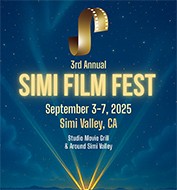
-
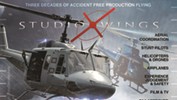 Studio Wings moves offices, flight operations and aircraft to the Santa Fe Airport
Studio Wings moves offices, flight operations and aircraft to the Santa Fe Airport -
 WeCutFoam Specializes in Fabrication of Signs, Logos and Letters for Company Summits
WeCutFoam Specializes in Fabrication of Signs, Logos and Letters for Company Summits -
 Studio Tech Provides Wi-Fi And Internet for The Superman Movie Press Junket
Studio Tech Provides Wi-Fi And Internet for The Superman Movie Press Junket -
 Superman movie Press Junket @ Buttercup Venues
Superman movie Press Junket @ Buttercup Venues -
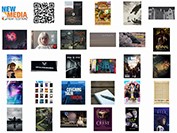 Honoring Stories Worth Telling Since 2009
Honoring Stories Worth Telling Since 2009
All Ages - All Cultures - All Media -
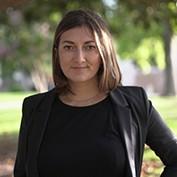 Xenia Lappo Joins ESTA as New Program Manager for Membership & Events
Xenia Lappo Joins ESTA as New Program Manager for Membership & Events -
 Nathan Wilson and Chris Connors discuss creating for children's television with ZEISS Supreme Prime lenses
Nathan Wilson and Chris Connors discuss creating for children's television with ZEISS Supreme Prime lenses -
 Luxury Solar Restroom Trailer Sustainability
Luxury Solar Restroom Trailer Sustainability -
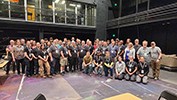 Midwest Rigging Intensive Returns with Touring Rigging Theme
Midwest Rigging Intensive Returns with Touring Rigging Theme -
 Custom Pool Floats That Steal the Show
Custom Pool Floats That Steal the Show -
 Malibu Autobahn Dresses Coachella 2025 for Shoreline Mafia
Malibu Autobahn Dresses Coachella 2025 for Shoreline Mafia -
 Thunder Studios Wins Nine 2025 Telly Awards
Thunder Studios Wins Nine 2025 Telly Awards -

-
 LCW Props Is Your One Stop Prop Shop
LCW Props Is Your One Stop Prop Shop -
 Venues in Los Angeles for Activations and Filming
Venues in Los Angeles for Activations and Filming -

-

-
 Honoring Stories Worth Telling Since 2009 - All Ages - All Cultures - All Media
Honoring Stories Worth Telling Since 2009 - All Ages - All Cultures - All Media -
 Buttercup Venues Accepting Submissions to Help Property Owners Monetize Their Spaces
Buttercup Venues Accepting Submissions to Help Property Owners Monetize Their Spaces -
 Studio Animal Services Stars in Latest Fancy Feast Commercial
Studio Animal Services Stars in Latest Fancy Feast Commercial -
 WDM celebrates Summer at the famed Michael's Santa Monica
WDM celebrates Summer at the famed Michael's Santa Monica -
 Studio Technical Services Inc.
Studio Technical Services Inc.
Spring 2025 Newsletter -
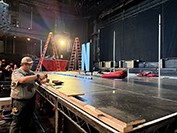 From Call to Setup: Coffee House Industries Lights Up Netflix Is a Joke at the Avalon
From Call to Setup: Coffee House Industries Lights Up Netflix Is a Joke at the Avalon -
 WLA3D produces scale model for Fox Grip
WLA3D produces scale model for Fox Grip -
 Filming Locations and Event Venues Los Angeles
Filming Locations and Event Venues Los Angeles -
 Scenic Expressions Launches a Full-Service Liquidation Solution for the Film & TV Industry
Scenic Expressions Launches a Full-Service Liquidation Solution for the Film & TV Industry -
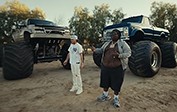 Producers Need Reel Monster Trucks for Reel Productions
Producers Need Reel Monster Trucks for Reel Productions -
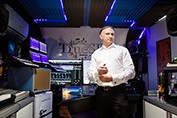 Meet Michael Way | Engineer
Meet Michael Way | Engineer -
 In Development: ZEISS Virtual Lens Technology Elevating VFX with physically based lens effects
In Development: ZEISS Virtual Lens Technology Elevating VFX with physically based lens effects -
 (2) PREMIER AV ACTIONS
(2) PREMIER AV ACTIONS -
 RSVP - 80 Films & Tech - Meet the Visionaries - EMMY, Telly, Peabody winners and more
RSVP - 80 Films & Tech - Meet the Visionaries - EMMY, Telly, Peabody winners and more -
 New Arrivals Are Here - Check Out LMTreasures.com
New Arrivals Are Here - Check Out LMTreasures.com -
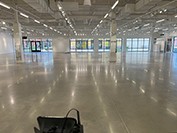 Film-Friendly Retail Space at Tejon Outlets
Film-Friendly Retail Space at Tejon Outlets -
 Behind Every Great Production, There's a Great Move
Behind Every Great Production, There's a Great Move -
 Buttercup Venues' recent work with Invisible Dynamics & Blue Revolver
Buttercup Venues' recent work with Invisible Dynamics & Blue Revolver -
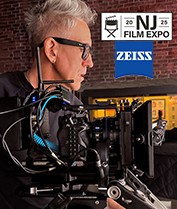 Join ZEISS Cinema at this year's NJ Film Expo on Thursday, May 1
Join ZEISS Cinema at this year's NJ Film Expo on Thursday, May 1 -
 The Location Managers Guild International (LMGI) announces that its 12th Annual LMGI Awards Show will be held on Saturday, August 23, 2025
The Location Managers Guild International (LMGI) announces that its 12th Annual LMGI Awards Show will be held on Saturday, August 23, 2025 -
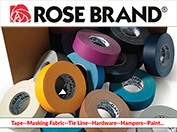 Get Your Production Supplies Now While Prices Are Stable*
Get Your Production Supplies Now While Prices Are Stable*
Rose Brand Is Your One Stop Shop -
 Immersive Sound for your next production from TrueSPL
Immersive Sound for your next production from TrueSPL -
 WeCutFoam Fabricating Large Scale Props and Decor for Companies & Products Launching Events
WeCutFoam Fabricating Large Scale Props and Decor for Companies & Products Launching Events -
 The "CA-Creates" eGroup Network
The "CA-Creates" eGroup Network -
 The Location Managers Guild International Announces the Newly Elected 2025 LMGI Board of Directors
The Location Managers Guild International Announces the Newly Elected 2025 LMGI Board of Directors -
 Production Moves: How to Find the Most Qualified Mover
Production Moves: How to Find the Most Qualified Mover -
 SAG-AFTRA Talent Payments @ Production Payroll Services
SAG-AFTRA Talent Payments @ Production Payroll Services -

-

-
 New Everyday Low Prices on Rigging Hardware
New Everyday Low Prices on Rigging Hardware
Take a Look at 20% Lower Prices on Average -
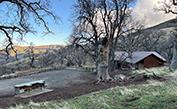 Tejon Ranch introduces its Premium Ranch Cabins
Tejon Ranch introduces its Premium Ranch Cabins -
 Our Enchanting Garden Collection is Growing!
Our Enchanting Garden Collection is Growing! -

-

-
 Top Entertainment CEOs & Industry Titans Join Forces for Groundbreaking New Media Film Festival®
Top Entertainment CEOs & Industry Titans Join Forces for Groundbreaking New Media Film Festival® -
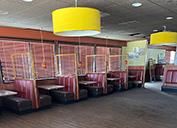 Tejon Ranch opens Diner location for your next Production
Tejon Ranch opens Diner location for your next Production -
 Discover the Performance of ZEISS Otus ML
Discover the Performance of ZEISS Otus ML
Deep Dive into the Features and Technology -
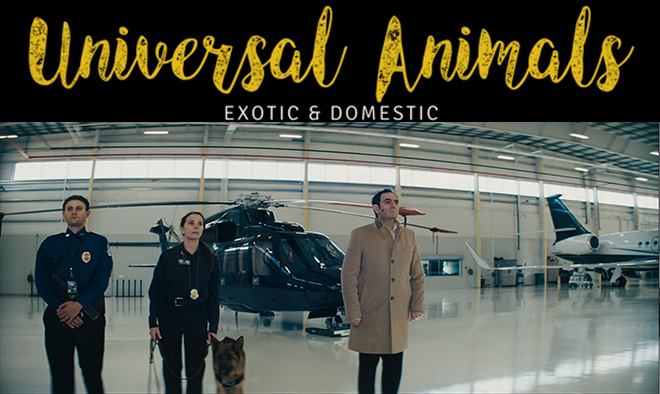 Universal Animals cast the dog in Anora!
Universal Animals cast the dog in Anora! -
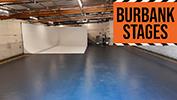 Burbank Stages is Now Open with upgraded support space
Burbank Stages is Now Open with upgraded support space -

-
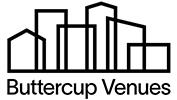 Buttercup Venues Grows Portfolio with Exciting New Locations for Filming and Events
Buttercup Venues Grows Portfolio with Exciting New Locations for Filming and Events -
 Fashion District Suite 301
Fashion District Suite 301 -
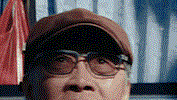 Something new is coming for Photographers
Something new is coming for Photographers
Mark Your Calendar - February 25th -
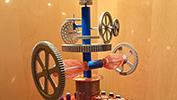 WLA3D completes scale model of vintage Knott's Berry Farm attraction
WLA3D completes scale model of vintage Knott's Berry Farm attraction -
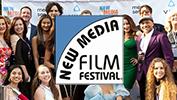 New Media Film Festival has invited you to submit your work via FilmFreeway!
New Media Film Festival has invited you to submit your work via FilmFreeway! -
 WeCutFoam Collaborated Once More with Children's Miracle Network Hospitals
WeCutFoam Collaborated Once More with Children's Miracle Network Hospitals -

-
 EigRig SLIDE-R1 Revolutionizes Filmmaking Production with Innovation
EigRig SLIDE-R1 Revolutionizes Filmmaking Production with Innovation -

-

-

-
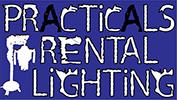 Practicals Rental Lighting Welcomes the Jucolor UV Flatbed Printer
Practicals Rental Lighting Welcomes the Jucolor UV Flatbed Printer -
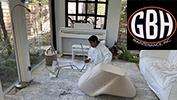 GBH Maintenance Inc. Has Grown
GBH Maintenance Inc. Has Grown -
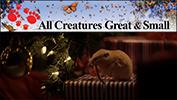 The Rarest Stars Shine Brightest
The Rarest Stars Shine Brightest -
 Affected by the ongoing California wildfires
Affected by the ongoing California wildfires -
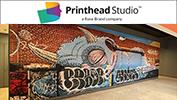 Get One-Stop Shopping...
Get One-Stop Shopping... -
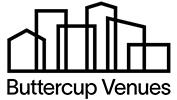 Buttercup Venues Expands
Buttercup Venues Expands -
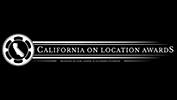
-
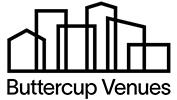 Los Angeles Office Spaces: Versatile Backdrops for Filming
Los Angeles Office Spaces: Versatile Backdrops for Filming -
 All Creatures Great and small holiday commercial for Montefiore hospital
All Creatures Great and small holiday commercial for Montefiore hospital -
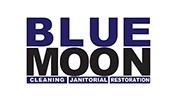 DEEP CLEANS WAREHOUSE FOR SUPER BOWL COMMERCIAL
DEEP CLEANS WAREHOUSE FOR SUPER BOWL COMMERCIAL -
 New Production Hub in Los Angeles
New Production Hub in Los Angeles -
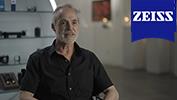 Carlos R. Diazmuñoz
Carlos R. Diazmuñoz -
 WeCutFoam Specializes in Decor
WeCutFoam Specializes in Decor -
 Studio Technical Services Inc.
Studio Technical Services Inc.
Fall 2024 Update -
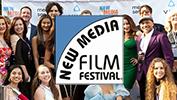 New Media Film Festival has invited you to submit your work
New Media Film Festival has invited you to submit your work -

-
 Available again!
Available again!
Studio 301 - 16,000 Sq. Ft. -
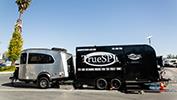 Elevate Your Production with SoundPressure Labs'
Elevate Your Production with SoundPressure Labs' -
 Pro-Cam expands rental operation...
Pro-Cam expands rental operation... -
 NATIONAL ASSOCIATION OF LATINO INDEPENDENT PRODUCERS
NATIONAL ASSOCIATION OF LATINO INDEPENDENT PRODUCERS -
 New Sony A9 III Reviews
New Sony A9 III Reviews -
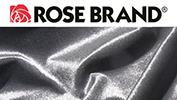 New, Heavyweight, Lustrous, Shimmering 56" Elana IFR Fabric
New, Heavyweight, Lustrous, Shimmering 56" Elana IFR Fabric -
 JOIN US IN ORLANDO THIS NOVEMBER!
JOIN US IN ORLANDO THIS NOVEMBER! -
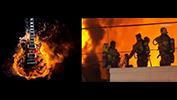 BLUE MOON CLEANING
BLUE MOON CLEANING
RESTORES MUSIC-MAKING -
 Another Collaboration Between WeCutFoam and Event Planner
Another Collaboration Between WeCutFoam and Event Planner -
 BLUE MOON CONGRATULATES 2024 COLA FINALISTS
BLUE MOON CONGRATULATES 2024 COLA FINALISTS -
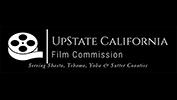 Fall Production News & Events
Fall Production News & Events -
 Not just green, but mighty Verde
Not just green, but mighty Verde -
 Introducing...
Introducing...
Restaurant/Bar/Venue in Encino -

-
 ESTA and Earl Girls, Inc. Launch $100,000 TSP Fundraising Challenge
ESTA and Earl Girls, Inc. Launch $100,000 TSP Fundraising Challenge -
 There's still time to register for ESTA's Plugfest
There's still time to register for ESTA's Plugfest -

-
 BLUE MOON CLEANING SEES SPIKE IN MAJOR LA FEATURE FILMING
BLUE MOON CLEANING SEES SPIKE IN MAJOR LA FEATURE FILMING -

Amoeba Records on Sunset
&
SuperMarket in K-Town -
 "Alice in Wonderland" tea party brought to life...
"Alice in Wonderland" tea party brought to life... -
 Filming With Production Ready Aviation Equipment
Filming With Production Ready Aviation Equipment -

-
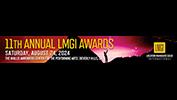
-
 A5 Events - Take Your Event to The Next Level
A5 Events - Take Your Event to The Next Level -
 The Original Amoeba Records Venue
The Original Amoeba Records Venue
& The SuperMarket -
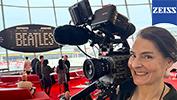 Doc Filmmaker Jennifer Cox
Doc Filmmaker Jennifer Cox -
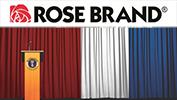 Red, White or Blue Rental Drapes
Red, White or Blue Rental Drapes -
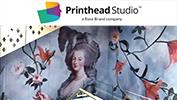 Introducing Tuck Track Invisible Framing for Fabric Prints
Introducing Tuck Track Invisible Framing for Fabric Prints -

-
 American Movie Company's LED Wall Studio Sale
American Movie Company's LED Wall Studio Sale -
 Black 360 Independence Studio
Black 360 Independence Studio -
 Nominations are open for the 2025 ESTA Board of Directors!
Nominations are open for the 2025 ESTA Board of Directors! -
 Custom Prop Rentals is moving to a new, larger location!
Custom Prop Rentals is moving to a new, larger location! -
 Pro-Cam opens Las Vegas branch, expanding rental operation
Pro-Cam opens Las Vegas branch, expanding rental operation -
 New ShowLED Starlight Drops
New ShowLED Starlight Drops -
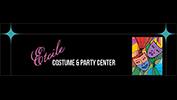 Costume House Sidewalk Sale
Costume House Sidewalk Sale -
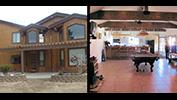 Working Wildlife's newly renovated 60 acre ranch available for Filming
Working Wildlife's newly renovated 60 acre ranch available for Filming -
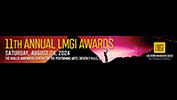 Location Manager Bill Bowling
Location Manager Bill Bowling
to Receive the Trailblazer Award -

-
 Mr. Location Scout is in Lake Tahoe
Mr. Location Scout is in Lake Tahoe -
 DreamMore Resort Fountain
DreamMore Resort Fountain -
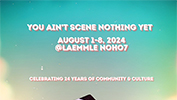 Valley Film Festival
Valley Film Festival
Greetings from the (818): -
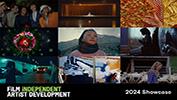 2024 Changemaker Awards and Artist Development Showcase
2024 Changemaker Awards and Artist Development Showcase -
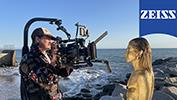 ZEISS Conversations with Jack Schurman
ZEISS Conversations with Jack Schurman -
 Collaboration Between WeCutFoam and Yaamava Resort & Casino
Collaboration Between WeCutFoam and Yaamava Resort & Casino -
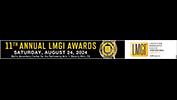 Location Managers Guild International Awards
Location Managers Guild International Awards -
 Molding Cloth
Molding Cloth
Make Fabulous Textured Designs -
 WeCutFoam Specializes in Large Events
WeCutFoam Specializes in Large Events -
 Introducing Truck Track Invisible Framing for Fabric Prints
Introducing Truck Track Invisible Framing for Fabric Prints -
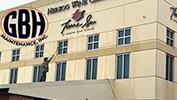 GBH Maintenance is back at Herzog Wine Cellars
GBH Maintenance is back at Herzog Wine Cellars -
 SATE NORTH AMERICA 2024
SATE NORTH AMERICA 2024 -
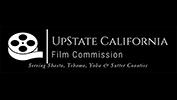 Production News & Events Summer Edition
Production News & Events Summer Edition -
 Four Amazing Architectural Locations!
Four Amazing Architectural Locations! -
 * BIG SAVINGS * ON BIG STUDIOS
* BIG SAVINGS * ON BIG STUDIOS -
 Let Your Brand Stand Tall!
Let Your Brand Stand Tall! -
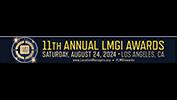 Sue Quinn to Receive Lifetime Achievement Award
Sue Quinn to Receive Lifetime Achievement Award -
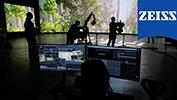 ZEISS Cinema at Filmscape Chicago
ZEISS Cinema at Filmscape Chicago -
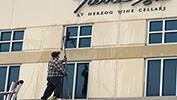 GBH Maintenance Is the Standard for Commercial Maintenance
GBH Maintenance Is the Standard for Commercial Maintenance -
 Come Join Us at Cine Gear Expo 2024
Come Join Us at Cine Gear Expo 2024 -
 Available now:
Available now:
6th Street Gallery & Venue -
 Thunder Studios Triumphs with Five Telly Awards
Thunder Studios Triumphs with Five Telly Awards -
 Reddit Went Public IPO - WeCutFoam Was There With Decor
Reddit Went Public IPO - WeCutFoam Was There With Decor -
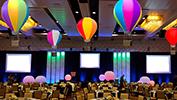 AirDD's Hottest New Product
AirDD's Hottest New Product
for 2024 Events -
 GBH Maintenance Sets the Standard for Window Cleaning
GBH Maintenance Sets the Standard for Window Cleaning -
 Haigwood Studios collaboration with the UGA Dodd School of Art
Haigwood Studios collaboration with the UGA Dodd School of Art -

-
 RX GOES TO 11!
RX GOES TO 11!
with Mike Rozett -
 Don't Be A Square - Think Outside The Box!!
Don't Be A Square - Think Outside The Box!! -
 WeCutFoam Fabricates Realistic Lifesize Props
WeCutFoam Fabricates Realistic Lifesize Props -
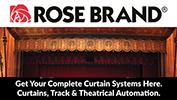
-
 Exposition Park Stage/Venue
Exposition Park Stage/Venue -
 Production Update From UpState California Film Commission
Production Update From UpState California Film Commission -
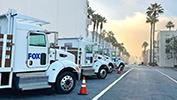 Base Camp With All The Extras
Base Camp With All The Extras -
 LAPPG AT THE ZEISS CINEMA SHOWROOM
LAPPG AT THE ZEISS CINEMA SHOWROOM -
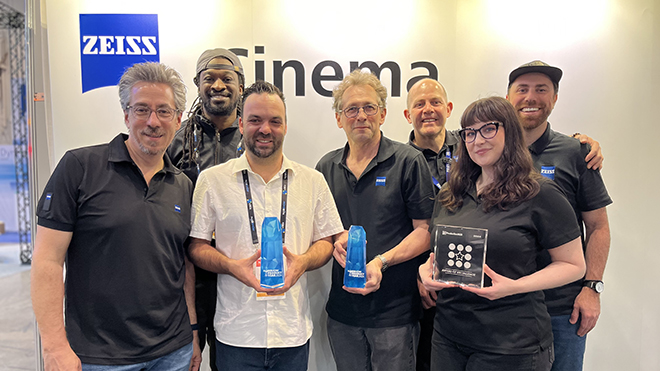 ZEISS Nano Primes and ZEISS CinCraft Scenario Received NAB Show 2024
ZEISS Nano Primes and ZEISS CinCraft Scenario Received NAB Show 2024 -
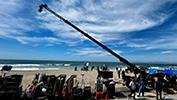 Cranium Camera Cranes Introduces the all new Tankno Crane!
Cranium Camera Cranes Introduces the all new Tankno Crane! -
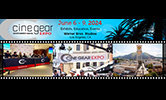 Come Join Us at Cine Gear Expo 2024
Come Join Us at Cine Gear Expo 2024 -
 FAA Drill Burbank Airport
FAA Drill Burbank Airport
(federal aviation administration) -
 Exclusive Stahl Substitute Listing from Toni Maier-On Location, Inc.
Exclusive Stahl Substitute Listing from Toni Maier-On Location, Inc. -
 GBH Maintenance: Elevating Janitorial Standards Across Los Angeles
GBH Maintenance: Elevating Janitorial Standards Across Los Angeles -
 LOCATION CONNECTION has the best RANCHES FOR FILMING!
LOCATION CONNECTION has the best RANCHES FOR FILMING! -
 Hollywood Studio Gallery has Moved
Hollywood Studio Gallery has Moved -
 AirDD's inflatable "Kraken" designs transformed Masked Singers
AirDD's inflatable "Kraken" designs transformed Masked Singers -
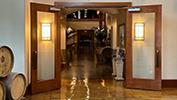 GBH maintenance Provided a Hollywood Shine for Herzog Wine Cellars
GBH maintenance Provided a Hollywood Shine for Herzog Wine Cellars -
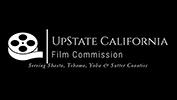 Production News & Events
Production News & Events
Spring Newsletter -
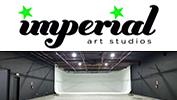 Immersive Venue/ Black Box/ Stage
Immersive Venue/ Black Box/ Stage
2024 DTLA Arts District -

-
 Exclusive Malibu Listing from Toni Maier - On Location, Inc.
Exclusive Malibu Listing from Toni Maier - On Location, Inc. -
 Empowered Collaborates with Harlequin Floors
Empowered Collaborates with Harlequin Floors -
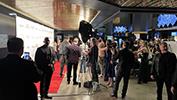 Movie Premiere, TCL Chinese Theater
Movie Premiere, TCL Chinese Theater -
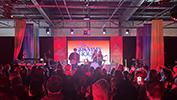 Studio Tech provides services for the Grammy House
Studio Tech provides services for the Grammy House -
 Sora AI Text To Video
Sora AI Text To Video -
 New Apex Photo Studios
New Apex Photo Studios
Website: Rent Smarter, Create More & earn rewards! -

-
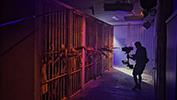 How Ideal Sets Founder Harry Hou Cracked the Code on Affordable Standing Sets
How Ideal Sets Founder Harry Hou Cracked the Code on Affordable Standing Sets -
 New Storage & Co-Working Spaces In Boyle Heights near Studios
New Storage & Co-Working Spaces In Boyle Heights near Studios
For Short or long term rental -
 Auroris X Lands at A Very Good Space
Auroris X Lands at A Very Good Space -
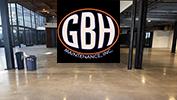 GBH Maintenance Completes Work on 33000ft Production Space
GBH Maintenance Completes Work on 33000ft Production Space -
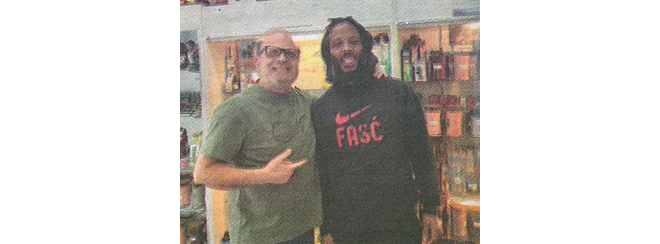 MUSICIAN ZIGGY MARLEY IS ANOTHER HAPPY.CUSTOMER OF MAILBOX TOLUCA LAKE'S 'DR. VOICE'
MUSICIAN ZIGGY MARLEY IS ANOTHER HAPPY.CUSTOMER OF MAILBOX TOLUCA LAKE'S 'DR. VOICE' -
 Custom Digitally Printed Commencement Banners & Backdrops
Custom Digitally Printed Commencement Banners & Backdrops -
 Rose Brand, SGM, Bill Sapsis, Sapsis Rigging, and Harlequin Floors Sponsor NATEAC Events
Rose Brand, SGM, Bill Sapsis, Sapsis Rigging, and Harlequin Floors Sponsor NATEAC Events -
 Kitty Halftime Show air for Animal Planet's Puppy Bowl
Kitty Halftime Show air for Animal Planet's Puppy Bowl -
 Georgia Animal Actors Persents Merlin
Georgia Animal Actors Persents Merlin -
 ESTA Launches Revamped NATEAC Website
ESTA Launches Revamped NATEAC Website -
 Mollie's Locations
Mollie's Locations -
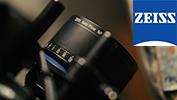 ZEISS Cinema News for February
ZEISS Cinema News for February -

-
 Seamless Fabric Backdrops up to 140ft x 16ft, Printed Floors...
Seamless Fabric Backdrops up to 140ft x 16ft, Printed Floors... -
 Check out all the Pioneer Gear at Astro!
Check out all the Pioneer Gear at Astro! -
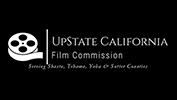 Production News & Events
Production News & Events -
 All of Your Production Supplies Gathered in Just One Place
All of Your Production Supplies Gathered in Just One Place -
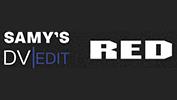 Meet the RED V-Raptor [X]
Meet the RED V-Raptor [X] -
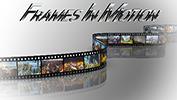 Sit Back and Enjoy Some Laughs
Sit Back and Enjoy Some Laughs -
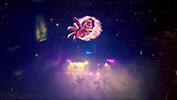 Mr. Location Scout Scouted and Managed Locations
Mr. Location Scout Scouted and Managed Locations -
 Introducing...
Introducing...
Landmark Restaurant in Encino -
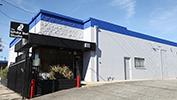 The White Owl Studio is celebrating all that is new!
The White Owl Studio is celebrating all that is new! -

-
 Last Call for NATEAC 2024 Proposals
Last Call for NATEAC 2024 Proposals -
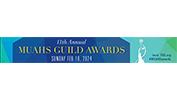 NOMINATIONS ANNOUNCED FOR THE
NOMINATIONS ANNOUNCED FOR THE
2024 MUAHS -
 Voted Best New Stage Rigging Products at LDI 2023
Voted Best New Stage Rigging Products at LDI 2023 -
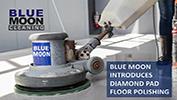 NEED MORE SPARKLE IN THE FLOOR?
NEED MORE SPARKLE IN THE FLOOR? -
 David Panfili to Appoint Michael Paul as President of Location Sound Corp.
David Panfili to Appoint Michael Paul as President of Location Sound Corp.
industry news
The Latest Industry News for the Exciting World of Production.
Creative Handbook puts together a bi-monthly newsletter featuring
up-to-date information on events, news and industry changes.
Add My Email
Studio Was Nirvana For Rock's Biggest Acts
By: Bob Strauss, Daily News Staff Writer | September 28, 2011
Email This Article |  |
| 
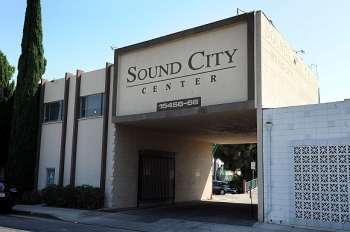
Nirvana's "Nevermind" turns 20 today, and while the band famously hailed from Seattle, its grunge rock masterpiece was very much a product of the San Fernando Valley.
What rock critics consider one of the top 20 greatest albums of all time was recorded at Van Nuys-based Sound City Studios, a family business that in May ended its 40-plus-year run as the musical home of some of rock's biggest acts.
Since then, music industry types have been lamenting the passing of the place where key albums by Fleetwood Mac, Tom Petty, REO Speedwagon and Johnny Cash, to name just a few, were made.
"There's magic in those walls ... I mean, there was - there isn't anymore," said Art Alexakis, whose band, Everclear, recorded the last album made in Sound City.
"Mainly because it was the place where `Nevermind' was recorded," Alexakis explained. "And `Rumors' was recorded, and `Heaven Tonight' was recorded, and Rage Against the Machine's first album - I mean, you just go down the list. It's amazing what that room sounded like."
Full mourning, however, is perhaps unnecessary. Sound City is still a thriving little entertainment lot run by the Skeeter family, which has been in charge since Neil Young laid some tracks for his breakout third album, "After the Gold Rush," in 1970.
"In May, we transitioned from being a commercial studio which is open to anybody who calls up - and where you had to search to find business all the time - to being a private studio rented full time to two different producers," said Sandy Skeeter, 49.
She described herself now as essentially a property manager for the two-building complex that also houses additional sound studios, green screen and foley (film sound effects) stages, a smartphone app company and 20-some offices.
Rooms have new look
But while you can still record music in the historic Sound City rooms, you won't be doing it with the custom, 1970s Neve 8028 sound board, or vibrating off of the old walls and peeling floor tiles that many swear made for the best drum sounds in the sonic universe. The rooms have been completely refitted by the new occupants and Nirvana drummer Dave Grohl bought the vintage Neve console.
"He was very humble about it," Sandy recalled. "Dave said, `Thank you so much for the opportunity to own the board. I wouldn't even have the computer I'm sending you this email on if it wasn't for this board.'
"I think there were a few other things that went into the record beside the board, like their songwriting and their playing and production. But he's just the right person to have the board."
Nirvana's second album was released on Sept. 24, 1991, and quickly built momentum based on the strength of its first single, "Smells Like Teen Spirit." It set the standard for the 1990s grunge movement and sold some 30 million copies over the years.
Less than three years after it brought alternative rock into the commercial mainstream, the band's troubled frontman, Kurt Cobain, committed suicide.
A little madness
Despite all the madness that ensued after the Butch Vig-produced "Nevermind" became an instant generational phenomenon, early Sound City partner (and Sandy's dad) Tom Skeeter didn't recall any significant misbehavior during the recording. The one, goofy act of larceny took some time to even register.
"When Evel Knievel did that jump over the Snake River, he did an album to commemorate it," said Tom, 79, whose studio recorded the motorcycle daredevil's stab at pop glory.
"Kurt Cobain was a huge Evel Knievel fan. So when Nirvana was there, he absconded with our tapes! We heard that rumor for years and we didn't know if it was true or not, but then somebody wrote a biography and it was in the book."
Things went relatively sedately for a place frequented by so many rock stars, though there was a little madness over the years. Convicted mass murderer Charles Manson, who at one point had rock aspirations, recorded demos there a year before Tom became involved with the operation. Also, following one all-nighter, a deranged bongo player set off a brief hostage situation at the studio.
Ghost from Big Band Era
Even the resident ghost is well-behaved, although he has been known to mess with the lighting and sound equipment -- when particularly loud hair bands recorded.
"I've seen the Sound City ghost," music producer John Paterno admitted. "I was producing the Black Mollys' record. I was sitting out in the big room with the band while they were doing a take. I looked up for a second, and just out of the corner of my eye it looked like somebody was walking through the middle of my room!
"The take's going, the music's going, I've got headphones on, I'm taking notes. My first thought is, who is walking through the middle of my session? So I looked up again, and nobody's there."
No, it wasn't Cobain. The figure Paterno later described looked and dressed like a former Sound City engineer named Joe Leahy, whose musical tastes were set during the Big Band Era.
Paterno, who produced the last session (a Yamaha Guitars promo) at Sound City before it was refurbished, is much more haunted by fond memories than by any ghost.
"It was one of those places that you could always go to and know you were going to get quality results out of," the producer said.
"I'm not sure that everybody who's worked there got it, but the people who did get it loved the place. It was one of the few places in town that I would go into and be able to just push up a couple of faders and get a sound. I would put up drum overheads, and you felt like you were almost done just by putting up a couple of mics."
Economics of the ever-collapsing music business are what led to the change.
"We did it just because we were getting killed," Sandy said. "Record budgets back in the day were hundreds of thousands of dollars. Now, some of our most famous producers - Grammy Award winners, million-selling albums - are like `Sandy, they gave me $40,000 to make the record and the guy has to sleep on my couch!"'
She pointed out, though, that her little campus is still thriving, and the new Sound City Studios, well, sound great.
"There will always be ongoing recording done in those studios," she said. "It is not dead, just different."
What rock critics consider one of the top 20 greatest albums of all time was recorded at Van Nuys-based Sound City Studios, a family business that in May ended its 40-plus-year run as the musical home of some of rock's biggest acts.
Since then, music industry types have been lamenting the passing of the place where key albums by Fleetwood Mac, Tom Petty, REO Speedwagon and Johnny Cash, to name just a few, were made.
"There's magic in those walls ... I mean, there was - there isn't anymore," said Art Alexakis, whose band, Everclear, recorded the last album made in Sound City.
"Mainly because it was the place where `Nevermind' was recorded," Alexakis explained. "And `Rumors' was recorded, and `Heaven Tonight' was recorded, and Rage Against the Machine's first album - I mean, you just go down the list. It's amazing what that room sounded like."
Full mourning, however, is perhaps unnecessary. Sound City is still a thriving little entertainment lot run by the Skeeter family, which has been in charge since Neil Young laid some tracks for his breakout third album, "After the Gold Rush," in 1970.
"In May, we transitioned from being a commercial studio which is open to anybody who calls up - and where you had to search to find business all the time - to being a private studio rented full time to two different producers," said Sandy Skeeter, 49.
She described herself now as essentially a property manager for the two-building complex that also houses additional sound studios, green screen and foley (film sound effects) stages, a smartphone app company and 20-some offices.
Rooms have new look
But while you can still record music in the historic Sound City rooms, you won't be doing it with the custom, 1970s Neve 8028 sound board, or vibrating off of the old walls and peeling floor tiles that many swear made for the best drum sounds in the sonic universe. The rooms have been completely refitted by the new occupants and Nirvana drummer Dave Grohl bought the vintage Neve console.
"He was very humble about it," Sandy recalled. "Dave said, `Thank you so much for the opportunity to own the board. I wouldn't even have the computer I'm sending you this email on if it wasn't for this board.'
"I think there were a few other things that went into the record beside the board, like their songwriting and their playing and production. But he's just the right person to have the board."
Nirvana's second album was released on Sept. 24, 1991, and quickly built momentum based on the strength of its first single, "Smells Like Teen Spirit." It set the standard for the 1990s grunge movement and sold some 30 million copies over the years.
Less than three years after it brought alternative rock into the commercial mainstream, the band's troubled frontman, Kurt Cobain, committed suicide.
A little madness
Despite all the madness that ensued after the Butch Vig-produced "Nevermind" became an instant generational phenomenon, early Sound City partner (and Sandy's dad) Tom Skeeter didn't recall any significant misbehavior during the recording. The one, goofy act of larceny took some time to even register.
"When Evel Knievel did that jump over the Snake River, he did an album to commemorate it," said Tom, 79, whose studio recorded the motorcycle daredevil's stab at pop glory.
"Kurt Cobain was a huge Evel Knievel fan. So when Nirvana was there, he absconded with our tapes! We heard that rumor for years and we didn't know if it was true or not, but then somebody wrote a biography and it was in the book."
Things went relatively sedately for a place frequented by so many rock stars, though there was a little madness over the years. Convicted mass murderer Charles Manson, who at one point had rock aspirations, recorded demos there a year before Tom became involved with the operation. Also, following one all-nighter, a deranged bongo player set off a brief hostage situation at the studio.
Ghost from Big Band Era
Even the resident ghost is well-behaved, although he has been known to mess with the lighting and sound equipment -- when particularly loud hair bands recorded.
"I've seen the Sound City ghost," music producer John Paterno admitted. "I was producing the Black Mollys' record. I was sitting out in the big room with the band while they were doing a take. I looked up for a second, and just out of the corner of my eye it looked like somebody was walking through the middle of my room!
"The take's going, the music's going, I've got headphones on, I'm taking notes. My first thought is, who is walking through the middle of my session? So I looked up again, and nobody's there."
No, it wasn't Cobain. The figure Paterno later described looked and dressed like a former Sound City engineer named Joe Leahy, whose musical tastes were set during the Big Band Era.
Paterno, who produced the last session (a Yamaha Guitars promo) at Sound City before it was refurbished, is much more haunted by fond memories than by any ghost.
"It was one of those places that you could always go to and know you were going to get quality results out of," the producer said.
"I'm not sure that everybody who's worked there got it, but the people who did get it loved the place. It was one of the few places in town that I would go into and be able to just push up a couple of faders and get a sound. I would put up drum overheads, and you felt like you were almost done just by putting up a couple of mics."
Economics of the ever-collapsing music business are what led to the change.
"We did it just because we were getting killed," Sandy said. "Record budgets back in the day were hundreds of thousands of dollars. Now, some of our most famous producers - Grammy Award winners, million-selling albums - are like `Sandy, they gave me $40,000 to make the record and the guy has to sleep on my couch!"'
She pointed out, though, that her little campus is still thriving, and the new Sound City Studios, well, sound great.
"There will always be ongoing recording done in those studios," she said. "It is not dead, just different."
No Comments
Post Comment




